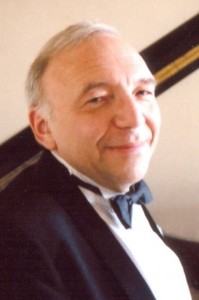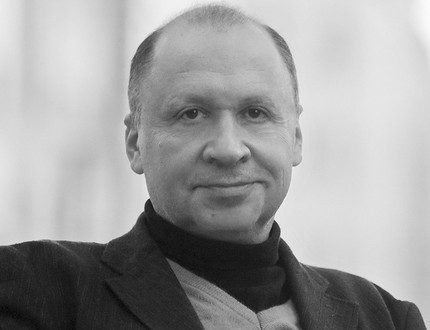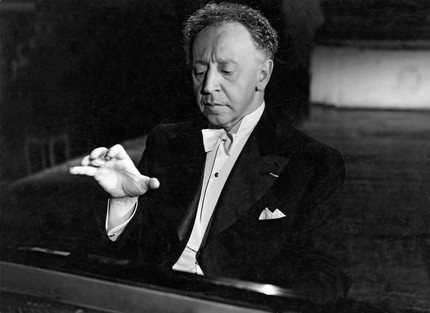
Alexey Arkadyevich Nasedkin (Aleksey Nasedkin) |
Alexey Nasedkin

Successes came to Alexei Arkadyevich Nasedkin early and, it seemed, could turn his head … He was born in Moscow, studied at the Central Music School, studied piano with Anna Danilovna Artobolevskaya, an experienced teacher who raised A. Lyubimov, L. Timofeeva and other famous musicians. In 1958, at the age of 15, Nasedkin was honored to speak at the World Exhibition in Brussels. “It was a concert held as part of the days of Soviet culture,” he says. – I played, I remember, Balanchivadze’s Third Piano Concerto; I was accompanied by Nikolai Pavlovich Anosov. It was then, in Brussels, that I actually made my debut on the big stage. They said it was good…”
- Piano music in the Ozon online store →
A year later, the young man went to Vienna, to the World Youth Festival, and brought back a gold medal. He was generally “lucky” to participate in competitions. “I was lucky, because I prepared hard for each of them, worked for a long time and painstakingly at the instrument, this, of course, made me go forward. In a creative sense, I think the competitions didn’t give me too much … ”One way or another, becoming a student at the Moscow Conservatory (he studied first with G. G. Neuhaus, and after his death with L. N. Naumov), Nasedkin tried his hand, and very successfully, in several more competitions. In 1962 he became a laureate of the Tchaikovsky Competition. In 1966 he entered the top three at the international competition in Leeds (Great Britain). The year 1967 turned out to be especially “productive” for prizes for him. “For some one and a half months, I took part in three competitions at once. The first was the Schubert Competition in Vienna. Following him in the same place, in the capital of Austria, is a competition for the best performance of music of the XNUMXth century. Finally, the chamber ensemble competition in Munich, where I played with the cellist Natalia Gutman.” And everywhere Nasedkin took first place. Fame did not do him a disservice, as sometimes happens. Awards and medals, growing in number, did not blind him with their radiance, did not knock him off his creative course.
Nasedkin’s teacher, G. G. Neuhaus, once noted one characteristic feature of his pupil – a highly developed intellect. Or, as he put it, “the constructive power of the mind.” It may seem strange, but this is exactly what impressed the inspired romantic Neuhaus: in 1962, at a time when his class represented a constellation of talents, he considered it possible to call Nasedkin “the best of his pupils” (Neigauz G. G. Reflections, memories, diaries. S. 76.). Indeed, already from his youth in the pianist’s playing one could feel maturity, seriousness, thorough thoughtfulness, which imparted a special flavor to his music-making. It is no coincidence that among the highest achievements of Nasedkin the interpreter are usually the slow parts of Schubert’s sonatas – in C minor (op. Posthumous), in D major (Op. 53) and others. Here his inclination to in-depth creative meditations, to the game of “concentrando”, “pensieroso” is fully revealed. The artist reaches great heights in the works of Brahms – in both piano concertos, in the Rhapsody in E flat major (Op. 119), in A minor or E flat minor intermezzo (Op. 118). He often had good luck in Beethoven’s sonatas (Fifth, Sixth, Seventeenth and others), in compositions of some other genres. As is well known, music critics like to name pianists-performers after the popular heroes of Schumann’s Davidsbund – some impetuous Florestan, some dreamy Euzebius. It is less often remembered that in the ranks of the Davidsbündlers there was such a characteristic character as Master Raro – calm, reasonable, omniscient, sober-minded. In other interpretations of Nasedkin, the seal of Master Raro is sometimes clearly visible …
As in life, so in art, the shortcomings of people sometimes grow out of their own merits. In-depth, intellectually condensed in his best moments, Nasedkin at another time may seem overly rationalistic: prudence it sometimes develops into rationality, the game begins to lack impulsiveness, temperament, stage sociability, inner enthusiasm. The easiest way, of course, would be to deduce all this from the nature of the artist, his individual-personal qualities – this is exactly what some critics do. It is true that Nasedkin, as they say, does not have his soul wide open. There is, however, something else, which also cannot be ignored when it comes to the excessive manifestations of ratio in his art. This is – let it not seem paradoxical – pop excitement. It would be naive to think that the masters of Raro are less excited about musical performance than the Florestans and Eusebios. It’s just expressed differently. For some, nervous and exalted, through game failures, technical inaccuracies, involuntary acceleration of the pace, memory misfires. Others, in moments of stage stress, withdraw even more into themselves – so, with all their intelligence and talent, it happens that restrained, not very sociable people by nature close themselves in a crowded and unfamiliar society.
“It would be funny if I started complaining about pop excitement,” says Nasedkin. And after all, what is interesting: annoying almost everyone (who will say that they are not worried ?!), it interferes with everyone somehow in a special way, differently than others. Because it manifests itself primarily in what is most vulnerable for the artist, and here everyone has their own. For example, it can be difficult for me to emotionally liberate myself in public, to force myself to be frank … ”K. S. Stanislavsky once found an apt expression:“ spiritual buffers ”. “In some psychologically difficult moments for the actor,” said the famous director, “they are pushed forward, resting on the creative goal and not letting it get closer” (Stanislavsky K.S. My life in art. S. 149.). This, if you think about it, largely explains what is called the predominance of the ratio in Nasedkin.
At the same time, something else attracts attention. Once, in the mid-seventies, the pianist played a number of works by Bach at one of his evenings. Played extremely well: Captivated the audience, led her along; Bach’s music in his performance made a truly deep and powerful impression. Perhaps that evening, some of the listeners thought: what if it’s not just excitement, nerves, favors of stage fortune? Perhaps also in the fact that the pianist interpreted his author? Earlier it was noted that Nasedkin is good in Beethoven’s music, in Schubert’s sound contemplations, in Brahms’s epic. Bach, with his philosophic, in-depth musical reflections, is no less close to the artist. Here it is easier for him to find the right tone on the stage: “emotionally liberate himself, provoke himself to be frank…”
Consonant with the artistic individuality of Nasedkin is also the work of Schumann; do not present difficulties in the performing practice of Tchaikovsky’s works. Naturally and simply for an artist in the Rachmaninov repertoire; he plays this author a lot and with success – his piano transcriptions (Vocalise, “Lilacs”, “Daisies”), preludes, both notebooks of etudes-paintings. It should be noted that from the mid-eighties, Nasedkin developed an ardent and persistent passion for Scriabin: a rare performance by the pianist in recent seasons took place without Scriabin’s music being played. In this regard, criticism admired her captivating clarity and purity in Nasedkin’s transmission, her inner enlightenment and – as is always the case with an artist – the logical alignment of the whole.
Glancing over the list of Nasedkin’s successes as an interpreter, one cannot fail to name such things as Liszt’s B minor sonata, Debussy’s Suite Bergamas, Ravel’s Play of Water, Glazunov’s First Sonata, and Mussorgsky’s Pictures at an Exhibition. Finally, knowing the pianist’s manner (this is not difficult to do), it can be assumed that he would get into sound worlds close to him, undertaking to play the suites and fugues of Handel, the music of Frank, Reger …
Particular attention should be paid to Nasedkin’s interpretations of contemporary works. This is his sphere, it is no coincidence that he won at the time in the competition “Music of the XNUMXth century”. His sphere – and because he is an artist of lively creative curiosity, far-reaching artistic interests – is an artist who loves innovations, understands them; and because, finally, that he himself is fond of composition.
In general, writing gives Nasedkin a lot. First of all – the opportunity to look at the music “from the inside”, through the eyes of the one who creates it. It allows him to penetrate the secrets of shaping, structuring sound material – that’s why, presumably, his performing concepts are always so clearly organized, balanced, internally ordered. G. G. Neuhaus, who in every possible way encouraged his student’s attraction to creativity, wrote: only executor” (Neigauz G. G. Reflections, memories, diaries. S. 121.). However, in addition to orientation in the “musical economy”, the composition gives Nasedkin one more property: the ability to think in art modern categories.
The pianist’s repertoire includes works by Richard Strauss, Stravinsky, Britten, Berg, Prokofiev, Shostakovich. He, further, promotes the music of composers with whom he has been in a long-standing creative partnership – Rakov (he was the first performer of his Second Sonata), Ovchinnikov (“Metamorphoses”), Tishchenko, and some others. And no matter which of the musicians of modern times Nasedkin the interpreter turns to, no matter what difficulties he encounters – constructive or artistically imaginative – he always penetrates the very essence of music: “to the foundations, to the roots, to the core,” in famous words B. Pasternak. In many ways – thanks to his own and highly developed composing skills.
He does not compose in the same way as, say, Arthur Schnabel composed – he wrote exclusively for himself, hiding his plays from outsiders. Nasedkin brings the music he created to the stage, although infrequently. The general public is familiar with some of his piano and chamber instrumental works. They always met with interest and sympathy. He would write more, but there is not enough time. Indeed, apart from everything else, Nasedkin is also a teacher – he has his own class at the Moscow Conservatory.
Teaching work for Nasedkin has its pros and cons. He cannot unequivocally state, as others do: “Yes, pedagogy is a vital necessity for me…”; or, on the contrary: “But you know, I don’t need her …” She is needed to him, if he is interested in a student, if he is talented and you can really invest in him without a trace all your spiritual strength. Otherwise … Nasedkin believes that communication with an average student is by no means as harmless as others think. Moreover, communication is everyday and long-term. Mediocrity, middle peasant students have one treacherous property: they somehow imperceptibly and quietly accustom them to what is being done by them, forcing them to come to terms with the ordinary and everyday, to take it for granted …
But to deal with talent in the classroom is not only pleasant, but also useful. You can, sometimes, peep something, adopt it, even learn something … As an example confirming his idea, Nasedkin usually refers to lessons with V. Ovchinnikov – perhaps the best of his pupils, silver medalist of the VII Competition named after Tchaikovsky, winner of the first prize at the Leeds Competition (Since 1987, V. Ovchinnikov, as an assistant, has been helping Nasedkin in his work at the conservatory. – G. Ts.). “I remember when I studied with Volodya Ovchinnikov, I often discovered something interesting and instructive for myself…”
Most likely, the way it was, in pedagogy – real, great pedagogy – this is not uncommon. But here is what Ovchinnikov, meeting in his student years with Nasedkin, learned a lot for himself, took as a model, there is no doubt. This is felt by his game – smart, serious, professionally honest – and even by the way he looks on the stage – modestly, restrainedly, with dignity and noble simplicity. One has to hear sometimes that Ovchinnikov on the stage sometimes lacks unexpected insights, burning passions … Perhaps. But no one ever reproached him that, they say, he is trying to camouflage anything in his performance with purely external effects and a melody. In the art of the young pianist – as in the art of his teacher – there is not the slightest falseness or pretentiousness, not a shadow musical untruth.
In addition to Ovchinnikov, other gifted young pianists, laureates of international performance competitions, studied with Nasedkin, such as Valery Pyasetsky (III prize at the Bach Competition, 1984) or Niger Akhmedov (VI prize at the competition in Santander, Spain, 1984 ).
In Nasedkin’s pedagogy, as well as in concert and performance practice, his aesthetic position in art, his views on the interpretation of music are clearly revealed. Actually, without such a position, teaching itself would hardly have a purpose and meaning for him. “I don’t like it when something invented, specially invented begins to be felt in a musician’s playing,” he says. “And students just quite often sin with this. They want to look “more interesting” …
I am convinced that artistic individuality is not necessarily about playing differently than others. Ultimately, the one who knows how to be on stage is individual. yourself; – this is the main thing. Who performs music according to his immediate creative impulses – as his inner “I” tells a person. In other words, the more truth and sincerity in the game, the better the individuality is visible.
In principle, I don’t like it too much when a musician makes listeners pay attention to himself: here, they say, what I am … I’ll say more. No matter how interesting and original the performance idea itself may be, but if I – as a listener – notice it in the first place, the idea, if I feel it first of all interpretation as such., is, in my opinion, not very good. One should still perceive music in a concert hall, and not how it is “served” by the artist, how he interprets it. When they admire next to me: “Oh, what an interpretation!”, I always like it less than when I hear: “Oh, what music!”. I don’t know how accurately I was able to express my point of view. I hope it’s mostly clear.”
Nasedkin lives today, like yesterday, a complex and intense inner life. (In 1988, he left the conservatory, focusing entirely on creativity and performing activities.). He had always loved the book; now she, perhaps, is even more necessary to him than in past years. “I think that as a musician, reading gives me as much, if not more, than going to concerts or listening to records. Believe me, I’m not exaggerating. The fact is that many piano evenings, or the same gramophone records, leave me, frankly, completely calm. Sometimes just indifferent. But with a book, a good book, this does not happen. Reading is not a “hobby” for me; and not only an exciting pastime. This is an absolutely necessary component of my professional activity.. Yes, and how else? If you approach playing the piano not just as a “finger run”, then fiction, like some other arts, becomes the most important factor in creative work. Books excite the soul, make you look around, or, on the contrary, look deeply into yourself; they sometimes suggest thoughts, I would say, vital for everyone who is engaged in creativity … “
Nasedkin likes to tell on occasion what a strong impression the “Liberation of Tolstoy” by I. A. Bunin made on him at one time. And how much this book enriched him, a person and an artist – its ideological and semantic sound, subtle psychologism and peculiar expression. By the way, he generally loves memoir literature, as well as high-class journalism, art criticism.
B. Shaw assured that intellectual passions – the most stable and long-term among the rest and others – they not only do not weaken over the years, but, on the contrary, sometimes become stronger and deeper … There are people who, both in the structure of their thoughts and deeds, and way of life, and many, many others confirm and illustrate what B. Shaw said; Nasedkin is undoubtedly one of them.
… Curious touch. Somehow, quite a long time ago, Alexey Arkadievich expressed doubts in a conversation whether he had the right to consider himself a professional concert player. In the mouth of a man who has been on tour in almost all parts of the world, who enjoys strong authority among specialists and the public, this sounded somewhat strange at first glance. Almost paradoxical. And yet, Nasedkin, apparently, had reason to question the word “concert performer”, defining his profile in art. It would be more correct to say that he is a Musician. And really capitalized…
G. Tsypin, 1990





